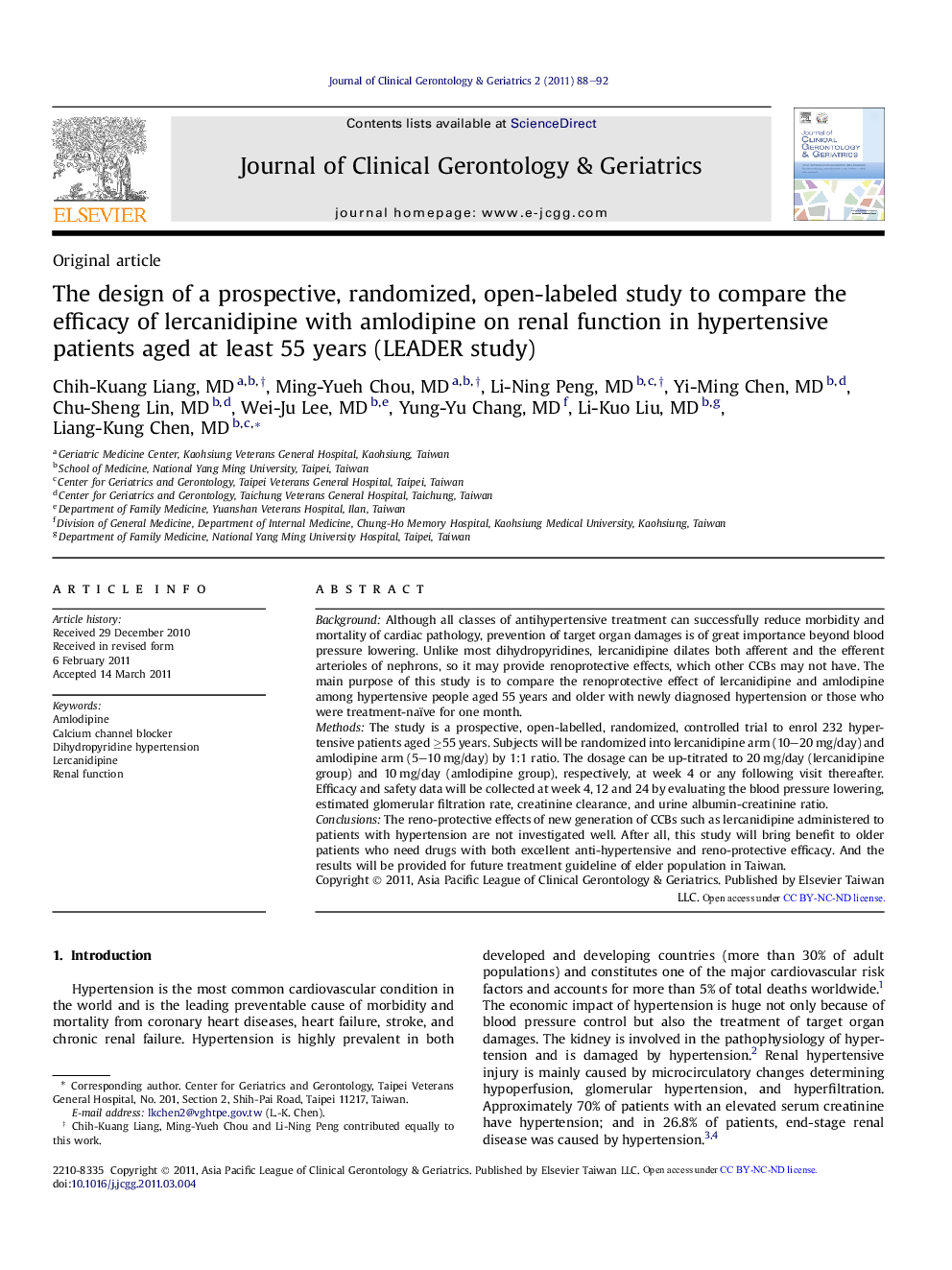| Article ID | Journal | Published Year | Pages | File Type |
|---|---|---|---|---|
| 3325709 | Journal of Clinical Gerontology and Geriatrics | 2011 | 5 Pages |
BackgroundAlthough all classes of antihypertensive treatment can successfully reduce morbidity and mortality of cardiac pathology, prevention of target organ damages is of great importance beyond blood pressure lowering. Unlike most dihydropyridines, lercanidipine dilates both afferent and the efferent arterioles of nephrons, so it may provide renoprotective effects, which other CCBs may not have. The main purpose of this study is to compare the renoprotective effect of lercanidipine and amlodipine among hypertensive people aged 55 years and older with newly diagnosed hypertension or those who were treatment-naïve for one month.MethodsThe study is a prospective, open-labelled, randomized, controlled trial to enrol 232 hypertensive patients aged ≥55 years. Subjects will be randomized into lercanidipine arm (10–20 mg/day) and amlodipine arm (5–10 mg/day) by 1:1 ratio. The dosage can be up-titrated to 20 mg/day (lercanidipine group) and 10 mg/day (amlodipine group), respectively, at week 4 or any following visit thereafter. Efficacy and safety data will be collected at week 4, 12 and 24 by evaluating the blood pressure lowering, estimated glomerular filtration rate, creatinine clearance, and urine albumin-creatinine ratio.ConclusionsThe reno-protective effects of new generation of CCBs such as lercanidipine administered to patients with hypertension are not investigated well. After all, this study will bring benefit to older patients who need drugs with both excellent anti-hypertensive and reno-protective efficacy. And the results will be provided for future treatment guideline of elder population in Taiwan.
